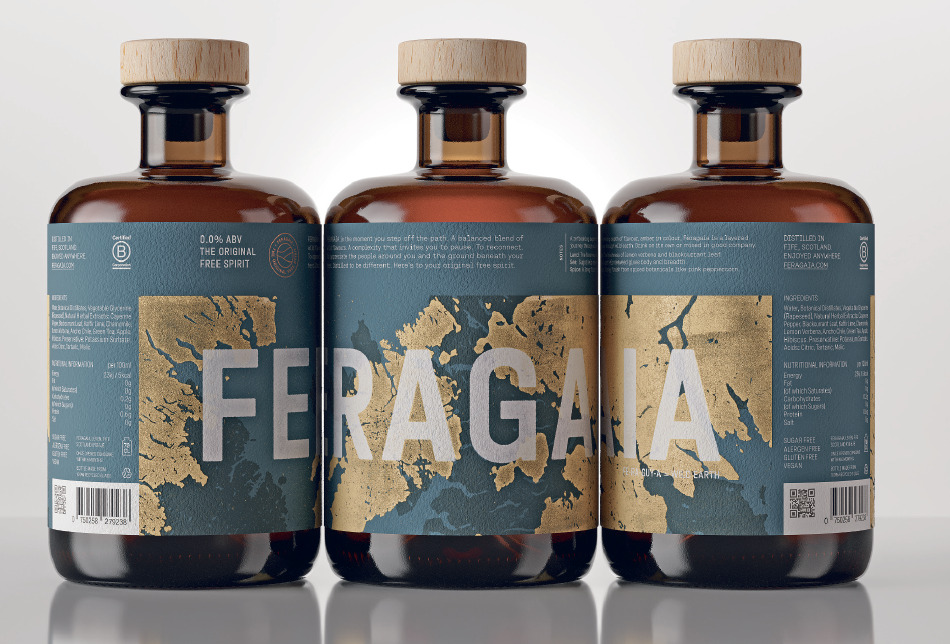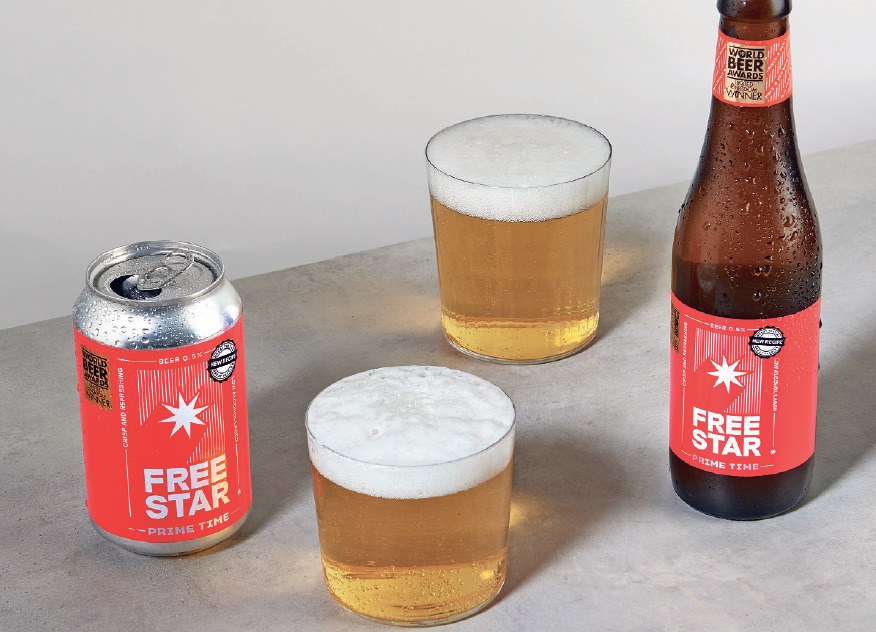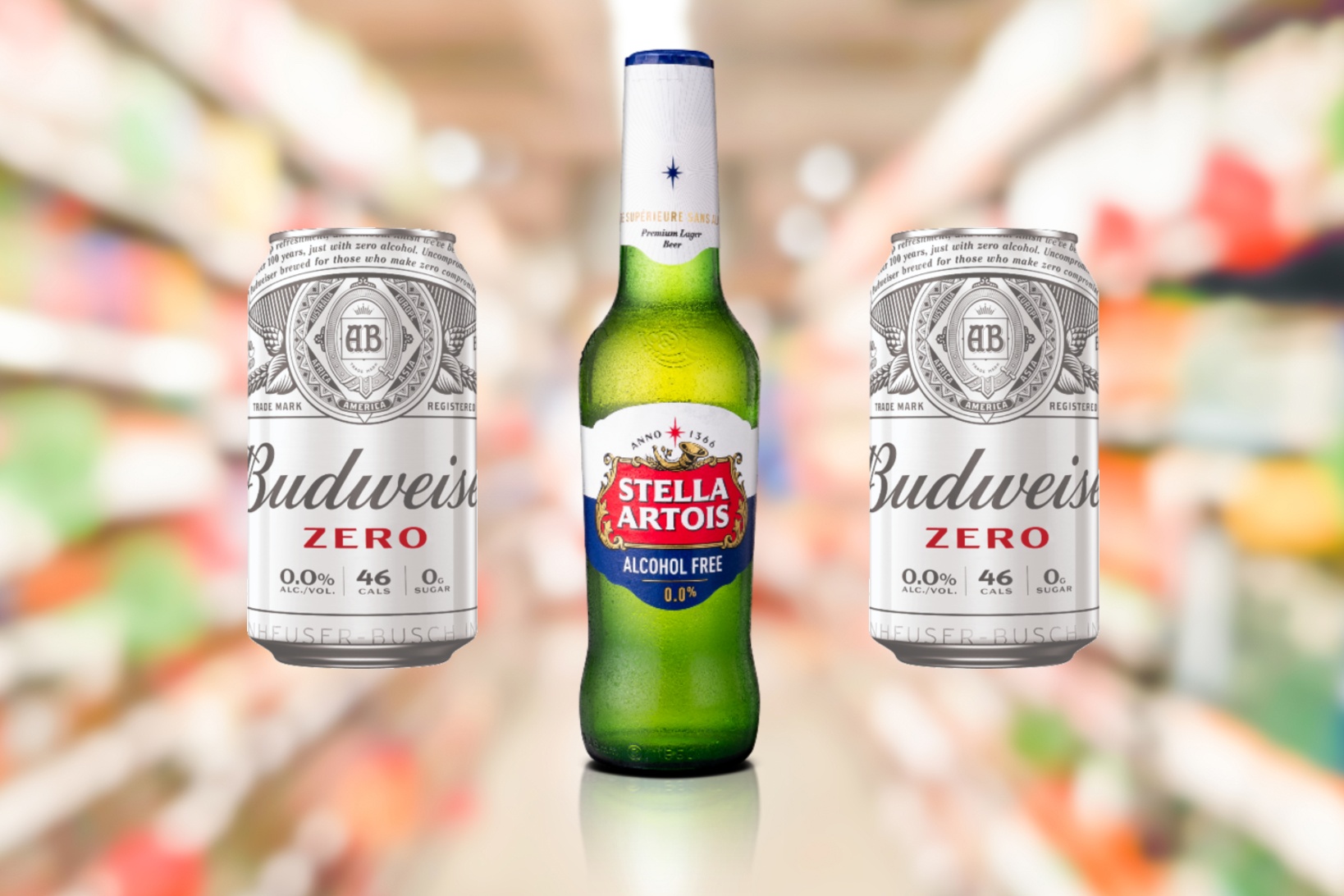Opportunity
With Dry January and Sober October now firm calendar fixtures, low- and no-alcohol drinks present a major opportunity for convenience retailers in 2023. Non-alcoholic wines and spirits sales are growing, but beer continues to dominate, with Nielsen Scantrack figures to June showing low- and no-alcohol beer purchases up 6% to £104m in the total off-trade, while total beer sales slid 14%.
The low- and no-alcohol category has gone from strength to strength, growing to £125m across the trade, according to Sunny Mirpuri, director for wholesale & convenience at Budweiser Brewing Group, with the independent convenience channel contributing more than £2m.
The cost-of-living crisis is impacting the category, with Nielsen IQ showing 29% of consumers are keen to pay for cheaper drinks, but 14% say low- and no-alcohol is more important to them than before the pandemic. Health is the principal driver in this. 70% of Brits were looking to be healthier, Public Health England reported in 2021, with a third of consumers saying limiting alcohol was an important part of their healthier lifestyles.
Since the pandemic, KAM Media’s Low & No report 2022 shows the percentage of consumers looking to drink less alcohol over the next 12 months has risen from 40% in 2020 to 55% in total in 2022 and 65% of under-25s. According to AMC Global’s No-Low Alcohol White Paper, 72% of UK adults have tried low- and no-alcohol drinks, sparking an increase in ‘sober curious’ consumers and the quality choices available.
A further motivator, low and no-alcohol alternatives often contain fewer calories and less sugar, presenting healthier options for shoppers wanting to enjoy the taste of their favourite drink without the effects of alcohol.
Read more: Low- and no-alcohol products price comparison – Pricewatch
Retailer viewpoint

Ushma Amin, Londis North Cheam, Surrey: “Our low- and no-alcohol sales are relatively small, but growing year on year. We have a dedicated space for beer, ciders and wine. We’ve tried spirits, but the price was too high for our consumers. We tried Seedlip and Warner’s. One customer started buying Gordon’s 0.0, but I’ve delisted it. I think alcohol-free spirits are levelling off, and people are going for taste profiles they recognise. I tried Warner’s alcohol-free gin, and it tasted like cordial. We also stock alcohol-free prosecco.
“Our sales are transitioning to low- and no-alcohol wine a bit more, but the World Cup held up beer sales and our spirits core range. People across the demographics are buying it. Low- and no-alcohol spirit buyers are 30-to-35-plus. Beer is more male-dominated, selling across the age range. Wine buyers are female, or men 30-plus. It’s rarer to get men under 25 buying low- and no-alcohol wine, but the growth is there.
The younger generation are drinking less across the market. I’m 30, and don’t touch it now, except when I go to an event. “Normally, we see a small uplift in alcohol-free beer in January, but wine’s more hit and miss. I don’t think Dry January has as much impact here as it does across the market. In beer, retailers should start with Stella, Peroni and potentially Heineken Blue. It’s not the strongest-selling alcohol-free beer, but it’s got a lot of recognition. In cider, stock Kopparberg and Thatchers Zero. In wines, stock Eisberg. Nozeco is quite important around celebrations. It’s the same principle with spirits – the opportunity’s there with the more established brands. If the price came down to £6 or £7, that would help, but they need to make it first, then take out the alcohol.”

How retailers can get in on the action
The growing demand for low and no-alcohol products looks good in theory, but there’s work to do if retailers are to make the most of this opportunity.
“These compelling stats make low- and no-alcohol sound promising for retailers, but the category is still evolving, especially in convenience, where distribution and availability isn’t where it needs to be,” says Miriam Thompson, off-trade category marketing executive at BrewDog PLC.
Despite cost-of-living pressures, this sector is poised to go from strength to strength. Brands are also creating new products with different flavours and are even introducing CBD-infused drinks to cater to customers seeking healthy options. For retailers looking to entice shoppers to their low and no-alcohol ranges, it’s important to design a range that is catering your local demographic.
“Premiumisation is our big bet for 2023. We’re seeing it across the total beer category, and it’s replicated here, with the premium no- and low alcohol segment growing by 23% year on year. Additionally, the highest number of alcohol free serves are seen within the 18-to-34-year-old demographic,” says Mirpuri at Budweiser. “Retailers would be wise to target these age groups to capitalise on this trend.”
Retailer view
Amit Puntambekar, Ash’s Shop, Fenstanton, Cambridgeshire: “Our low- and no-alcohol sales are relatively small, but growing year on year. We have a dedicated space for beer, ciders and wine. We’ve tried spirits, but the price was too high for our consumers. We tried Seedlip and Warner’s. One customer started buying Gordon’s 0.0, but I’ve delisted it. I think alcohol-free spirits are levelling off, and people are going for taste profiles they recognise. I tried Warner’s alcohol-free gin, and it tasted like cordial. We also stock alcohol-free prosecco.
“Our sales are transitioning to low- and no-alcohol wine a bit more, but the World Cup held up beer sales and our spirits core range. People across the demographics are buying it. Low- and no-alcohol spirit buyers are 30-to-35-plus. Beer is more male-dominated, selling across the age range. Wine buyers are female, or men 30-plus. It’s rarer to get men under 25 buying low- and no-alcohol wine, but the growth is there. The younger generation are drinking less across the market. I’m 30, and don’t touch it now, except when I go to an event.
“Normally, we see a small uplift in alcohol-free beer in January, but wine’s more hit and miss. I don’t think Dry January has as much impact here as it does across the market. In beer, retailers should start with Stella, Peroni and potentially Heineken Blue. It’s not the strongest-selling alcohol-free beer, but it’s got a lot of recognition. In cider, stock Kopparberg and Thatchers Zero. In wines, stock Eisberg. Nozeco is quite important around celebrations. It’s the same principle with spirits – the opportunity’s there with the more established brands. If the price came down to £6 or £7, that would help, but they need to make it first, then take out the alcohol.”

Building and promoting a range
One in three consumers rate the low- and no-alcohol choice in convenience as good/very good versus supermarkets’ three in five, and this gap translates into lost sales. In KAM Media’s 2021 Low & No Report, one in five consumers bought low- and no-alcohol beer in convenience stores, trailing one in three in grocery. But the desire is there, as Thompson confirms. But for shoppers, it’s about range.
“The top three low- and no-alcohol off-trade buying missions are dinner, quiet evenings at home and nights in, with shoppers seeking alternatives to soft drinks and water,” she says. “As expectations grow regarding choice and availability, now’s the time to capitalise on this upwards trend.”
Once you have introduced low- and no-alcohol products into your store, it is critical people are made aware of them, particularly if they have requested you stock them in the first place. PoS and prominent positioning early will put them front and centre of people’s agendas and then cross-merchandising with big-night-in products can start turning impulse sales into regular ones. “If they haven’t already, retailers should introduce low- and no-alcohol categories to meet demand, and speak to customers about the products available in store,” says Kenton Burchell, trading director at Bestway Wholesale.
“Use gondola ends and the main drink location. Merchandise low- and no-alcohol drinks next to categories such as soft drinks, mixers, crisps and snacks to drive linked sales. “Use PoS banners and shelf talkers to introduce products, run tasting events in store to get shoppers’ feedback on the brands they prefer, and feature promotions with an introductory lower price.”
Amit Puntambekar, from Ash’s Shop in Fenstanton, Cambridgeshire, has seen low- and no-alcohol sales increasing, but it’s been built on consumer conversations and being quick to react to preferences and dislikes.
“Retailers should have up to three options in each category,” he says. “You need a bit of range, but if you get it wrong, the customers will tell you. We built our beer selection around what our shoppers want.
“You should merchandise around the same categories, though we’ve made a distinct two shelves for low- and no-alcohol, to guide the journey and make it a bit quicker. “To push sales, you should feature the available promotions across the categories. “As I see it, it’s up to the market to tell us what to stock and then up to us to work out if it fits our demographic, and do what we can.”

- Low- and no-alcohol options that deliver strong sales
- Bestway Wholesale is supporting the low- and no-alcohol category by stocking Heineken 0.0 Lager Beer and Beck’s Blue Alcohol-Free Beer.
- In alcohol-free wine, Nozeco Special Edition Alcohol Free Fine Sparkling, Eisberg Alcohol Free Chardonnay and McGuigan Zero Shiraz are strong sellers. Budweiser’s Corona Cero launched in March 2022 across grocery and convenience, an alcohol-free version of Corona. Budweiser Zero and Stella Artois Alcohol-Free are growing signifi cantly ahead of the total low- and no-alcohol category, showing double digit growth. Retailers can capitalise on the popularity of craft beer and low- and no-alcohol drinks with
- BrewDog Punk IPA AF, the alcohol-free version of the UK’s number-one craft beer and the only craft beer in the low-alcohol top 10. BrewDog Punk IPA AF boosts category value, at a higher price per litre than alcohol-free lagers generally. BrewDog’s original low-alcohol product, BrewDog Nanny State, offers a US-style alternative, while its latest alcohol-free launch is 0.5% crusher BrewDog Lost AF.





Comments
This article doesn't have any comments yet, be the first!